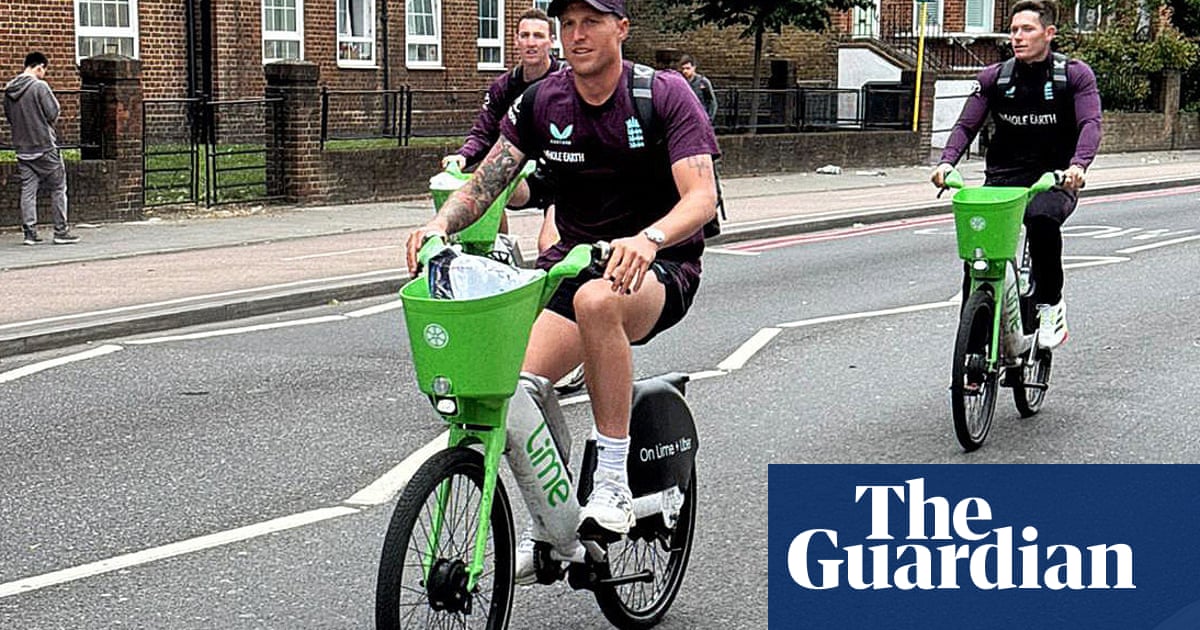It was not quite a case of planes, trains and automobiles but bikes, buses and by foot after the players and staff of England and West Indies were forced to take extreme measures to negotiate traffic on the way to the third one-day international at the Oval.
The England and WalesCricketBoard blamed “heavy traffic north of the river” – there was talk of broken down buses, a traffic light failure and extensive roadworks – for the delayed arrivals of both squads. England abandoned the team bus as it sat stationary midway between their Kensington hotel and the ground, completing their journey on Lime bikes, on foot or by train – Jamie Smith took the underground option, while there were confused looks from fans walking down Kensington Park Road in the direction of the ground about 45 minutes before the scheduled start, perhaps thinking they themselves were running a bit late, as Joe Root and Adil Rashid strode past them. “We were on the bus for a while, then we all decided to get off and get on some Lime bikes,” the England captain, Harry Brook, said.
The tourists stayed on their coach as it crawled the 3.5 miles from their hotel in Chelsea at sub-pedestrian pace. So, while the home side arrived later than anticipated, they still had plenty of time to go through their normal pre-match preparation of pig – a game of group keepy-uppy – and some work in the nets. Meanwhile, West Indies’ arrival coincided with the scheduled time of the toss, which because of their absence had by then been pushed back by half an hour, and their preparations were so abbreviated the batters did not get a chance for a net. Brook took no pity, winning the toss and putting them in.
It was not a completely unfamiliar experience for all of the England players – some of them, and most of the current coaching staff, often choose to walk to games even when there are no traffic issues, while on the tour of New Zealand last year most of the team adopted Christchurch’s e-scooters.
